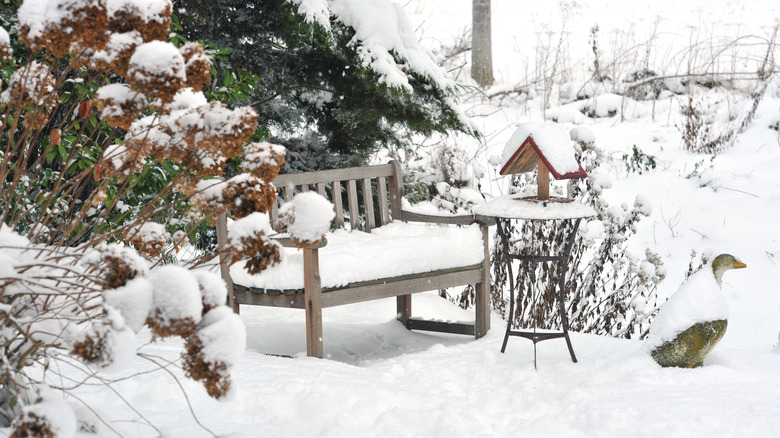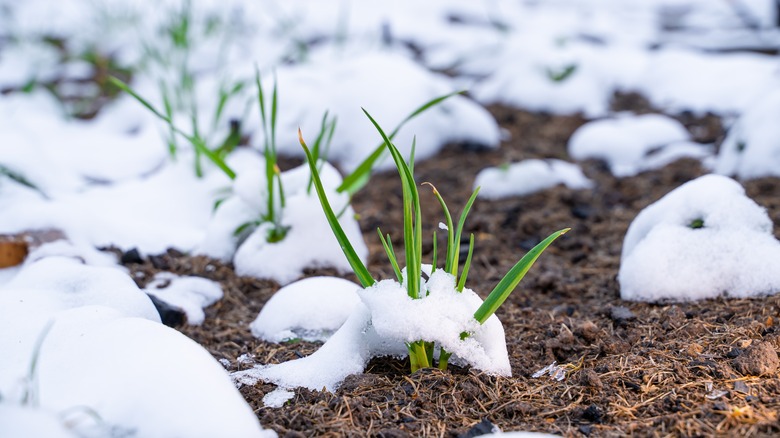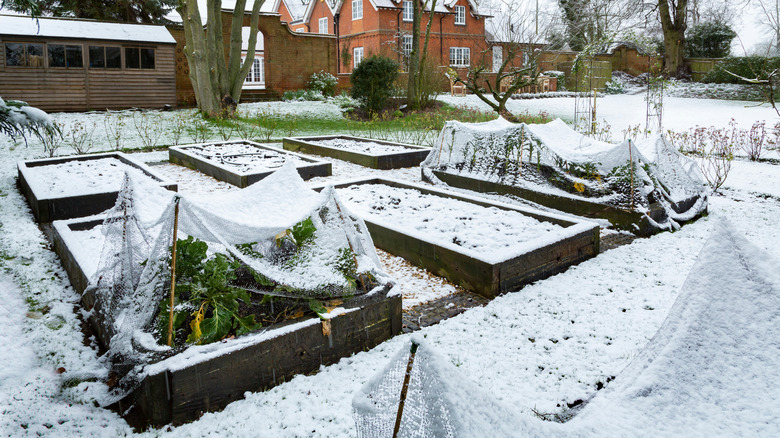Snow Is A Secret Weapon When It Comes To Planning Your Spring Garden. Here's Why
Winter is a time for rest and renewal for gardeners. The unwelcoming weather allows extra time to read and learn more about gardening while staying cozy and comfy. Although it seems that a thick layer of snow on the ground serves no other purpose than to keep you inside, even this type of precipitation can help you plan your garden. As the snow melts, it will help you identify the shadiest parts of your lawn and garden.
Depending on where you live, there may be several benefits to having snow on the ground. If you live in a northern region where you have a consistent blanket of snow, it actually helps protect roots and bulbs by offering a layer of insulation. This protects those plants from constant freezing and thawing, which can damage bulbs and weaken plants. Snow also works like mulch to keep the soil beneath consistently moist. When it melts, snow deposits nitrogen from the atmosphere, providing natural fertilizer. Whether you live in an area with consistent snowfall or a spot that just gets the occasional dusting, the pattern in which it melts can tell you a lot about the amount of sunlight each area of your garden gets.
Identifying shady spots
Although it's not an exact science, observing how the snow melts in your garden can help you choose the right plants for each area. The reason this process is not exact is that the sun is in a slightly different position overhead in the summer than it is in the winter, so melting patterns will be slightly different than the precise location of your summer shade. Still, it's close enough to help you prevent major mistakes like planting tomatoes, which require full sun, in a spot that gets too much shade for them to thrive.
Snow will melt first in the brightest, warmest part of your garden. As you observe how the snow in your space melts, you may be surprised by the areas where it lingers. Buildings, neighbor's trees, and fencing are just a few items that provide shade in unexpected spots. To remember where these shady areas are, make a simple sketch of your yard. Mark the areas that get the most shade so you remember where they are when it's time to start planting your garden.
Planning your garden
Now that you know what areas get the most and least sun in your garden, you can place the right plants in their ideal spots. The places where the snow melted first are ideal for sun-loving fruits and vegetables. Peppers, tomatoes, okra, and squash will soak up the sun in these spots, rewarding you with ample harvests. This is also a wonderful spot for ornamental flowers and bushes, like hardy hibiscus and coneflowers.
In areas where snow lingers the longest, like around the base of trees and the north sides of buildings are where you'll want to opt for more shade-tolerant plants. Ferns and hostas are lovely ornamental shade options, while some greens and root crops also grow well in these areas. Edible plants like lettuce and radishes will last longer into the summer without tasting bitter thanks to the cooler soil in these spots. Late winter is the perfect time to plan your garden, so enjoy these days indoors knowing that gardening season is just around the corner and you will be well prepared.


